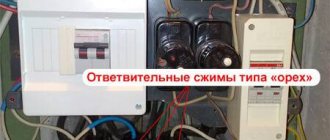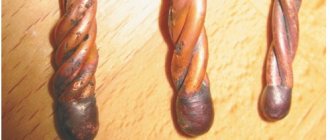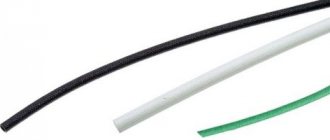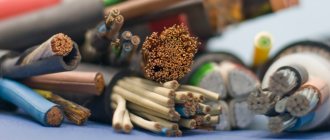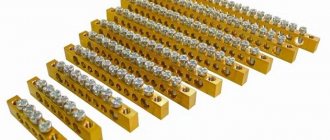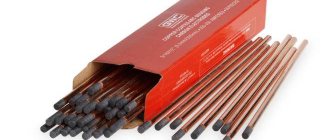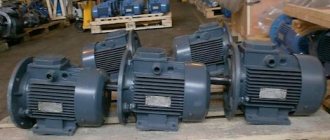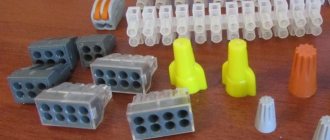Connection of aluminum wires
How to connect two aluminum wires to each other? It would seem like a rather banal question, but even here the first answer that comes to mind is not always correct. After all, twisting of wires is prohibited according to the PUE standards, and any wires can be connected only by crimping, soldering, welding and using screw clamps. And we’ll talk about how to do it correctly in our article.
Peculiarities
When carrying out a major renovation, a person changes everything in his house, including the wiring.
A new junction box is installed where wiring needs to be done. To do this better, it is best to use terminal blocks. This is an excellent device that will provide tight fixation for the entire period of operation. Today, new types of this product are being produced, which are many times superior to screw ones. To carry out installation and wiring, a person will need a minimum of time. This was largely made possible thanks to self-clamping terminals.
Coupling Clamps
Take a tube, drill two holes at its ends, and cut threads into them. The wires are inserted and clamped with bolts. There are screw or screwless terminals.
You can do without bolts, these places are simply compressed strongly with pliers. Most often used for fastening single-core wires with a cross-section of up to seventeen millimeters.
Power cable brand ASB - characteristics, classification and rating of the best manufacturers. 115 photos and video instructions for choosingRetro wiring in a wooden house: calculation of parameters, design, installation and selection of vintage elements. 165 photos of stylish ideas
Heating cable for gutters and roofs: choosing and installing a self-regulating anti-icing heater with your own hands (135 photos + video instructions)
When to connect cables
Cable connections will be required in case of poor-quality wiring performed earlier, or due to errors made during installation work. To restore power to the house, you need to connect the electrical wires. You can make a connection in ways that are divided into 2 groups:
- For the first group, no special equipment is required.
- The second group already requires certain skills and professional tools.
Work on connecting cables must be carried out in compliance with safety regulations.
Causes of malfunction and main elements
Broken wires are a common occurrence and most often occur unexpectedly. Most popular problems:
- Poor contact with various equipment;
- Short-term loss of light;
- Strong heat generation in some areas.
To prevent breakdowns, it is necessary to detect the problem in a timely manner and take appropriate measures to eliminate it. For fixation, it is best to use terminal blocks, as they can provide a person with reliability and durability. In addition, they are easy to install, which will allow you to use them at home without any problems.
Today in stores there are hundreds of varieties from top companies, which differ in price and technical parameters. But besides this, the difference may lie in the method of fixation.
All terminals consist of two elements:
- Plastic case, which is made in the form of cells;
- A brass pipe with a threaded hole on both sides.
When fixing the cable, it is important for a person to remember that the pipe may differ in diameter, especially if you plan to connect thick wires. Therefore, you first need to choose the right size. This installation can be used in any area: from household to car wiring repair, which makes the product universal. Most often, the element is used when connecting a lamp with a short conductor.
It is important to know the negative sides of such fixation:
- Self-clamping options are designed for use with specific cables. They are not suitable for connecting elements with a larger cross-section.
- If a person bought disposable terminal blocks, then he should remember that they cannot be used to fix flexible wires, since they are not intended for this.
- It is also worth understanding that the product is afraid of exposure to high temperatures. If it is constantly used in such an environment, then over time the spring will weaken, causing the contact pressure to decrease and the connection density to be lost.
- The terminals provide good fixation, but if you have the opportunity and experience to carry out soldering, then it is better to do it, it will be much more reliable.
The main advantage of the element is the ability to connect copper and aluminum wires. In addition, by using terminal blocks, the chance of contact oxidation is reduced significantly. This became possible due to the fact that the screw clamps the cable so tightly that contact between the cores becomes impossible.
Methods for connecting aluminum wires
As we said above, aluminum wires can be connected in four main ways - screw or bolt clamps, pressing, welding and soldering. Let's look at the features of each of these types of connections.
Connecting aluminum wires using the compression method
Let's start with the most common connection method - compression. It can be of several types - bolted, screw or using a pressure spring, which is used in Wago terminals.
| Connecting aluminum wires to each other using this type of connection has one drawback. If you use conventional screw terminals, then using a screw you can completely or partially press down the soft aluminum core. This will either reduce or completely destroy contact. |
| To exclude this option, the connection should be made through special contact nozzles made of brass. Brass has less elasticity and is more difficult to bend. Therefore, such attachments provide reliable contact and eliminate the possibility of damage to the wire. |
| Aluminum lugs for bolting wires and cables | For bolted connections of aluminum wire, special lugs should also be used. They are attached to a wire or cable using the crimping method and then these lugs are connected using a bolted method. |
| As for Wago terminals, everything is much simpler here. This type of connection cannot damage the wire, so such terminal blocks can be used without additional attachments. This somewhat compensates for their higher price. |
Connecting aluminum wires using the pressing method
Recently, connecting aluminum wires with a sleeve has become increasingly popular. This is partly due to the widespread use of crimpers or, as they are also called, crimping pliers. This tool allows you to crimp wires of different sections, ensuring fairly reliable contact.
Crimpers for crimping wires
Sleeves for connecting aluminum wires
- The connection of wires by crimping is carried out using special sleeves. These sleeves are available in different diameters and materials. To connect aluminum wires, either aluminum or brass sleeves should be used. Copper should not be used under any circumstances, since the connection of these two materials can lead to the formation of galvanic isolation and ultimately the complete destruction of the aluminum conductor.
Note! The cross-section of the sleeve for connecting wires must correspond to the cross-section of the wire. If you use a sleeve with a smaller cross-section, then to insert the wire into the sleeve you will have to reduce its cross-section, which will negatively affect the contact. If you use a sleeve with a larger cross-section than the wire, then the area of the contact connection will be much smaller, which again will lead to overheating of the contact.
Sleeves for connecting wires of different sections
- To connect wires of different sections, there are sleeves with different diameters of the inlet holes. They can also be used to connect more than two wires in one sleeve.
- Sleeves for connecting aluminum wires have a strictly required length. Believe me, the manufacturer did not make a reserve in the sleeve, so cutting the sleeve in half in order to save money is a very bad option. After all, when connecting two wires, crimping should be done twice with opposite crimps. If you cut the sleeve in half, you won't be able to do this, and the contact will be poor quality.
Pressed wires
- Another frequently asked question relates to connections between stranded aluminum wire and solid wire. It is possible to make such a connection using crimping, and it will be of sufficient quality. The main thing is to choose a sleeve with the appropriate inlet diameters. Indeed, in most cases these are wires of different sections.
Connecting aluminum wires welding method
The best quality of connection is ensured by welding. Due to the fact that in this case the wire forms a single whole, problems with transition resistances, the possibility of reducing the pressure force, and much more are practically eliminated. But there are also a lot of problems here.
Welding aluminum wires
- The fact is that, as we said above, an oxide film forms on the surface of aluminum. It has completely different heat and electrical conductivity than aluminum itself. In this regard, welding aluminum wires is difficult.
- Since the melting temperatures of oxide and aluminum differ, attempts to simply weld wires with a carbon electrode will not be very successful. Oxides will remain on the molten drops of aluminum, and the compound itself will not be homogeneous, as in the video.
The photo shows the process of welding aluminum wires
- To eliminate this problem, you can remove oxides from the surface mechanically, but this is labor-intensive and not always effective, since the formation of a new film occurs almost instantly.
- Based on this, in most cases, various fluxes are used for welding, which can destroy the oxide film. This material should destroy the oxide film and practically not react to pure metal; in addition, it should not produce harmful compounds during welding. Selecting such material is quite difficult and often you have to make a compromise.
Wire welding technology
- But even with the use of fluxes, it is quite difficult to make a welded connection of wires with your own hands without proper preparation. This is due to the fact that it is extremely important to select the proper welding voltage (usually no more than 20V) and exposure time to the conductor (usually 1-2 seconds).
Note! In addition to electric welding of aluminum wires, gas welding is also quite common. It has its own characteristics regarding both the materials used and the welding temperature.
Connecting aluminum conductors by soldering
The last option that can be used to connect sockets with aluminum wires is soldering. This method is quite labor-intensive and can hardly be called fast.
Therefore, it is used extremely rarely for power plants, and in low-voltage networks, aluminum wires are used quite rarely due to their rigidity. Nevertheless, let's consider this option.
Soldering aluminum wires
- The main problem here, as in the case of welding, is the oxide film. In addition, there is such a problem as the lack of visual control over the temperature of the wire. Indeed, with prolonged exposure to high temperatures, aluminum can change its physicochemical properties.
- Based on this, the process of soldering aluminum becomes quite complex. First of all, we need to get rid of the oxide on its surface. This can be done using any abrasive materials, but you should not be zealous, since a new film is formed almost instantly. Our task is only to reduce its thickness.
Flux for soldering aluminum
- After this, the wires are fixed and solder and flux are touched to the wires. It is better to use TsOP-40 or its analogues as solder.
- Flux for soldering aluminum is F - 59A, F - 61, F - 34 or other similar compositions. They destroy the oxide film quite well.
Solder for soldering aluminum
- When the solder touches the wires, they should be scraped across them to make it easier for the flux to break down the oxide film. If soldering is performed without using flux, then the intensity of friction of the solder on the wires should be more intense.
Advantages and disadvantages of connecting wires with terminals
Let's consider the positive qualities of using terminals. These are the following advantages:
- connection security;
- the occurrence of a spark is excluded;
- durability and reliability during operation;
- high degree of rigidity;
- simplicity during installation.
You can use the terminals yourself. During installation, use a regular screwdriver. During installation, it is important to know how to connect the wires in the junction box.
The choice of connection method depends on the material of manufacture of the cores, their cross-section, the number of wires and installation conditions.
The internal structure of the terminal with levers.
Conclusions and useful video on the topic
How to connect wires and what accessories to use in this or that version of the paper clip? The video talks about this in detail and shows:
A variety of mechanical elements that act as a reliable clamp greatly facilitates installation and adjustment work. Thanks to the use of such elements, the level of safe operation of electrical networks increases.
The only caveat is the correct use of such accessories, since a discrepancy in technical capabilities threatens to negate all the advantages of the clamps.
Do you have experience selecting and using wire clamps? Or want to ask questions on the topic? Please comment on the post and participate in discussions. The feedback block is located below.
Twist
This method is used in the absence of special tools and additional devices. The wires are twisted and wrapped with electrical tape. This option is reliable, but you need to follow some rules. Copper twists only with copper, and aluminum with aluminum. It is forbidden to twist copper and aluminum products, as this causes an electrolysis process and destroys the components. The twisting option depends on the material, diameter and purpose of the connection.
The modern version of twisting is performed without pliers, but with the help of special polymer caps, inside of which there is a metal spiral. To make the connection, the ends of the wires must first be stripped to a distance of 15 mm, and then inserted into the cap. Then the body is turned all the way.
Pros of twisting:
- simple technology;
- available materials.
Minuses:
- Do not connect aluminum and copper wires;
- not very high quality connection.
This option is suitable for temporary wiring.
Twisting wires
Important! Twisting is not used in rooms with high humidity or in buildings made of wood.
Stranded and single-core
When connecting multi-core wires, the following rules should be followed:
- strip the insulation by 4 cm;
- unwind the conductors by 2 cm;
- connect to the junction of untwisted conductors;
- twist the wires only with your fingers;
- You can tighten the twist using pliers;
- bare wires are insulated with special tape or heat shrink tubing.
Popular types of electrical clamps
In practice, the installation of electrical circuits uses special technical accessories - clamps of various designs. The specific application is determined by many criteria, ranging from the purpose of the network to the technical and operational parameters of the connections.
Type #1 - simple terminals with screws
What is remarkable about this type of accessory is that the terminal allows you to make a reliable connection without clearly disturbing the structure of the conductors. In this case, it is permissible to connect conductors based on different metals, for example, copper and aluminum.
Single-way terminals on a polypropylene (polyethylene) base are considered widespread in everyday practice.
The design is a metal, usually brass or bronze, short channel of small diameter, equipped with two threaded holes for fixing screws.
The simplest design of a screw clamp based on a polypropylene base. A metal bushing with locking screws that tighten the ends of the wires inserted inside the bushing is “hidden” under the polyethylene casing.
Such a metal channel is embedded inside a polyethylene shell, which has good insulating properties. In order to connect two separate conductors, the end parts of these conductors are placed in the channel on both sides, after which they are securely fixed (pressed) with screws.
There are different configurations of channel terminals, based on installation parameters such as:
- conductor diameter,
- current characteristics,
- insulation class,
- number of contact points.
In fact, the selection of such accessories is possible for any technical conditions, especially those that are relevant for the household sector.
Type #2 - self-tightening and lever clamps
This type of connecting accessories is characterized by increased user convenience. For example, if you use disposable self-tightening clamps, simply insert the stripped end part of the wire all the way inside the clamp hole.
The plate-type design is self-aligning into the “clamp” position. During installation, it is enough to lift the plate with the blade of a screwdriver and insert the end of the wire or simply insert, in the case of one core, without the help of a screwdriver
Inside the structure there is a spring plate, which is installed with the cutting part in the “opposite direction” of the conductor. When the wire is inserted into the channel all the way, the plate is pressed with a metal core and the “countermoving” part cuts into the body of the wire.
To release the conductor, you need to press the plate with a screwdriver through the hole in the second row. These types of clips are not reusable. They are enough for 3-4 times of repeated connections.
Convenient configuration that uses special levers instead of traditional screws. This design option presses the wire with a plate, which is fixed with a lever
Numerous repeatability of connections is supported by similar designs, but supplemented with a press lever. The practical application of such accessories is simple.
It is enough to lift the lever perpendicular to the channel, insert the stripped conductor and lower the lever until it clicks. The wire will be securely fastened. Accordingly, the reverse operation is performed if the wire is released from the channel.
Type #3 - connecting insulating clamps
Accessories of this kind provide the connection of conductors of relatively small diameter. In fact, connecting insulating clamps (technical abbreviation - PPE) represent a kind of hand tool of the same twist.
Two or more pre-stripped ends of the conductors are formed into a group and “covered” with a connecting insulating cap until it stops. Then the cap is turned several times.
Inside such a system there is a spring spiral having a conical shape. As the cap is screwed on, the spiral wraps around a group of ends of the conductors and pulls them tightly into a single knot, pinching them inside.
A cap type of element, with the help of which a completely reliable connection of conductors of a relatively small cross-section is organized. As a rule, such elements are used on electrical networks with a voltage of 110-220 volts
Cap connectors are used, as a rule, on electrical wiring of relatively low power. Very often, this type of clamp is chosen when installing household in-house electrical networks.
There are two types of caps:
- cone-shaped straight shape without thrust protrusions;
- cone-shaped straight shape with persistent protrusions.
The second configuration, as a rule, has a slightly larger diameter and is intended for fastening conductors of larger diameter.
Type #4 - piercing clamping element
On electric lines with power up to 1 kV, piercing type clamps are often used. This type of accessory allows working with conductors with a cross-section of 1.5 - 10 mm2 on branch lines or working with conductors 16 - 95 mm2 on main trunk lines.
The design is a metal plate girth covered with insulation, which is compressed by pressure from a thrust bolt.
The plates that wrap around the conductor are equipped with sharp metal teeth, which, under pressure, pierce the insulation of the wire and dig directly into the body of the conductor.
A clamping structure, the operating principle of which is based on piercing the conductor insulation with subsequent tight contact with the metal core. Such products are usually used on high-voltage networks
The advantages of such structures are obvious. Working with them allows you to avoid labor-intensive operations of removing insulation. In addition, the design of the piercing clamps is made in such a way that it allows you to perform work without turning off the power supply to the line.
Piercing type clamps provide a high degree of sealing against atmospheric influences.
Polymer insulation, resistant to ultraviolet radiation, is reinforced with fiberglass to enhance strength. There is an insulating rubber cap for the tip.
View #5 - clamp between bolt and nut
Often, on power networks, installers use a simple but quite reliable method of fastening through a regular bolt clamp.
To organize a connection of this kind, you need always available parts:
- bolt of suitable diameter;
- nut to bolt;
- two washers according to size;
- lock-nut.
In a similar way, it is permissible to connect dissimilar electrical conductors, for example, copper and aluminum.
An example of creating a connection between conductors of different metal structures using a conventional bolt clamp. The problem of separating the direct copper-aluminum bond is solved by simply adding an extra washer
However, theoretically, such a combination is not recommended in electrical practice due to the different chemical properties of the metals.
Soldering
Soldering is also often used. Moreover, this option is as durable as welding, but there is no need to take out a welding machine. A regular soldering iron will also work. The wiring is fixed using fused solder.
To perform soldering, first remove the insulating layer from the wires and then clean the surface with sandpaper. The contacts need to be joined, and then solder from the soldering iron is applied to the twist. The solder should get inside the twist and connect the wires to each other. After cooling, the wires should be insulated.
Connection options.
Sleeves
When powerful clamps for several wires are needed, sleeves are used. They are a tinned copper tube or a flat tip with a hole made for fastening.
All connected wires must be inserted into the sleeve and crimped using a special crimper device (crimping pliers). This wire clamp has a number of positive aspects:
- It is very convenient to use lugs with holes when there is a need to secure wire assemblies to housings with screws.
- Crimping at the connection does not increase the resistance.
As you can see, there are a lot of wire clamps, each with its own advantages and disadvantages. Choose based on which wires you need to connect and where the connection will be located. But do not forget that the most important thing in electricity is reliability and safety.
Welding
Now let's find out how to connect the wires by welding. To do this, the wires are first twisted and then their ends are welded. This results in a reliable and stable connection. The disadvantages of this method include the fact that the connection is permanent. And if you need to change something, you will have to completely remove the fused area.
In addition, this method requires a welding unit and special electrodes. Once cooled, the welded area is insulated using heat shrink tubing or electrical tape.
Welding method.
Twisting never goes out of fashion
The modern market presents such a variety of terminals for connecting electrical wires that it would seem that it is high time to forget about twisting. But this method stubbornly continues to be popular among electricians, despite the fact that factory connectors ensure safety and reliability. In addition, the terminals are much more convenient to use and look more aesthetically pleasing than twisted wires wrapped with electrical tape.
Twisting has another very significant drawback. If we consider this method objectively, it does not fit into any concept - detachable or permanent connection. Logically, it is clear that the ends of a detachable device can be repeatedly disconnected. But twisting cannot be called a full-fledged detachable connection, because each time after unwinding and re-twisting, the ends of the wires will deteriorate. Twisting also does not fit the concept of a permanent connection, because it does not have the necessary stability, strength and reliability.
How to make a good twist is described in this video:
But if you never get out of the habit of twisting wire strands, then at least use convenient and safe connecting caps instead of insulating tape.
Let's take a closer look at the types of clamps
There are different types of terminal blocks designed to perform specific jobs. We will now try to consider the most common products.
Copper
Copper wire can be connected using terminal blocks, Wago clamps (necessarily using special paste), using a bolt, or soldering.
Aluminum
Aluminum wires can also be connected using any method, but with some special features. When connecting, the metal must be manually stripped of insulation. Copper and aluminum wires cannot be connected directly. The connection point becomes very hot and over time the contact weakens. Therefore, it is better to use terminal blocks, wago, bolt connection or special branch clamps.
Screw type terminal blocks
Screw terminal blocks are one of the most common types. They are a brass sleeve with two bolts in a plastic case. Contact is ensured by bolt pressure. The body can be made of different materials - polyethylene, polyamide and polypropylene. With their help, you can connect wires with a cross-section from 0.5mm² to 35mm².
The advantages of screw pads include:
- No special tools required (only a screwdriver is needed).
- Reusable.
- Possibility of using the required number of segments.
Screw pads also have a number of disadvantages:
- High contact resistance.
- Low reliability (weakened by vibration).
- Restrictions on wire material.
- Installation duration.
- Requires some skill to tighten.
- Annual maintenance required.
It is not advisable to connect aluminum wires with such terminals. They have increased “fluidity”; the connection weakens over time. To avoid heating due to an increase in contact resistance, it is necessary to tighten them regularly. This creates inconvenience during operation.
Certain problems also arise with multi-core wires. With screw connections, high-quality installation can only be performed using special tips or blocks with a pressure plate. Otherwise, there is a risk of damage to the cores when tightening the screw.
Thus, single-core copper wires are most suitable for this design.
Installation with a screw connection is very simple:
- Cut off the required number of terminals from the block (with a regular knife).
- Strip the insulation of the connected wires (5-12mm).
- Insert the stripped ends of the wires into the terminals;
- Tighten the screws.
Dealing with this is not difficult. The main thing is to be careful when tightening screws and choose quality terminal blocks. When choosing, you need to pay special attention to the manufacturer of the product. Today there are products from different brands on sale. It is better to use products from such well-known manufacturers as Legrand, ABB, Tridonic, Werit.
Product prices depend not only on technical characteristics, but also on the manufacturer:
| Manufacturer | Type | Characteristics | Price, rub |
| Tridonic | EKL 0 S | 450V,32A,12pairs,4mm², white. | 55,64 |
| Legrand | Nybloc 034211 | 250V,24A,12pairs,4mm², black. | 209,00 |
| Korner | OK 432-PLP-BN | 450V,32A,12pairs,4mm², white. | 118,68 |
| Tridonic | EKL 3 S | 750V,76A,12pairs,16mm², white. | 158,78 |
| Legrand | Nybloc 034211 | 250V,76A,12pairs,16mm², white. | 540,49 |
| Werit | 112-11521 | 250V,63A,12pairs,16mm², white. | 299,23 |
Recommendations for connecting wires
Previously, simple twists of single- and multi-core wires were used, but the rules for electrical installations (PUE) do not allow the use of such joints. Welding, soldering, crimping, bolted, screw, and spring connections are allowed. Twists can be used to temporarily connect the ends of the wire if repair work is underway (inspection, testing).
Aluminum and copper conductors must not be interconnected. Such a joint will not last long, especially in a damp room or outdoors.
Terminal blocks decide the possibility of such a connection if you need to connect a copper flexible cable to the old aluminum wiring. If copper and aluminum touch, an anodized metal washer is placed between them.
General installation requirements
The quality of connections and branches during installation is of paramount importance. When troubleshooting an electrical circuit, most often the problem occurs due to a lack of contact. Poor contact can lead not only to a circuit break, but also to overheating of the wires. This is often the cause of fire.
Therefore, strict requirements are imposed on them.
Regardless of which terminals are used for installation, the following rules must be followed:
- During installation, it is necessary to leave a reserve of wires before all connections (for reconnection).
- All connections must be located in accessible places.
- The location of the connecting elements must be protected from vibration and any other mechanical influences.
- The insulation of the connecting elements must match the insulation of the conductors.
- All connections must be made in junction boxes, cabinets and control panels, and special niches in building structures.
There are many types of terminal blocks available for different purposes:
- plug-in;
- hybrid;
- mini and micro terminals;
- fuse terminals;
- disconnect terminals;
- multi-pin;
- multi-tiered;
- checkpoints and others;
For all varieties, the installation rules are the same.
Review of Wago terminal blocks and how they work
Wago terminal blocks are often used to connect electrical equipment. They are ideal for connecting wires inside junction boxes and panels. Clamps can be used to secure both single-core and stranded wires. Depending on the purpose, many different series are produced, but they are all divided into disposable and reusable products.
Reusable terminal blocks
The 222 series indicates the reusable use of the clamp. This means that the wire can be inserted and removed from the socket. To fix or release the core, just turn the orange lever. 10 mm of insulation is removed from the end of the wire, the lever is raised and, after inserting the core into the socket, it is released. The spring mechanism will firmly clamp any core with a cross-section of up to 4 mm2. That's it, the connection is ready. To remove the conductor from the socket, just lift the flag and pull the core towards you.
Disposable terminal blocks
The 773 series indicates that the vago clamp is disposable. Moreover, it is intended only for single-core wires. To connect a stranded wire, you must first crimp it with a ferrule.
Disposable clamps can be filled with conductive lubricant. It prevents aluminum conductors from oxidizing. The presence of lubricant can be identified by the black body of the clamp, but it may also be dark gray.
To make the connection, the bare edge of the wire is inserted with slight force into the clamp socket, where the mechanism automatically bites it. Since the product is considered disposable, there is no working lever on the body.
Sometimes they manage to remove the core from disposable clamps by twisting with a certain force. However, after such actions, the clamping plate is deformed, which does not guarantee a high-quality next connection.
Clamps for other purposes
In addition to the designs of clamps intended for connecting electrical conductors, there are a variety of similar accessories for other purposes.
Anchor clamps for fastening
Designs of clamps for fastening (suspension) of wires with a cross-section of 2 – 25 mm2 in an amount of two to four wires. Structurally, the anchor accessory consists of a polymer body equipped with a self-adjusting clamping wedge.
A device whose design also assumes the role of a clamp. However, in this case we are no longer talking about connecting the conductors, but about the installation method - fixing it in a suspended state
Two configurations of anchor clamps are available:
- for self-supporting systems;
- under an isolated carrier neutral.
The mechanism has an easy-to-open bow, making it convenient and easy to install the clamp on brackets, hooks, and then attach electrical wires to the body of the clamp.
Wire clamps for test needs
Often the practice of electronics and electrical engineering involves the use of clamps for so-called “test” purposes. Traditionally, such accessories are “crocodiles” - jagged sliding (push) metal structures.
The toothed part of such a clamp remains open, while the pressure part is insulated with PVC material.
Another option for the design of clamping elements belonging to the class of equipment under test. So-called alligator clips are used to make a temporary contact, for example, to measure voltage
Such accessories are used for temporary attachment (engagement) to wires, for example, for the purpose of measuring current or network voltage.
This type of clamp can be divided into two categories - for low-voltage electronics and for high-voltage electrical networks. Both categories differ from each other in the limiting technical parameters for current.
Safety Tips and Rules
Only craftsmen with a qualification group are allowed to weld. Persons who have skills in working with a soldering iron are also allowed to solder. Cables may only be connected in the manner permitted for them. Do not work with damaged wiring. All exposed parts must be insulated.
You can connect the cables in different ways. The choice of connection method is determined by the material, cross-section diameter and other parameters. For electrical equipment to operate correctly, the conductors need to be connected securely. In case of unreliable contact, there is a risk of fire.
Foreign terminals
So far their reliability is inferior to Russian models. WAGO electrical clamps deserve attention. The company has invented interesting interface-type devices - the interface between two clamping systems.
One of them is translated as “press the wire.” Remove a minimum of the braid and push the exposed portion under the terminal. The latch will not release the wire back unless it is turned in the opposite direction.
Another design is the Power cage clamp - in the form of a double complex device with a strong spring and a current bus. Suitable for any wire. Take a close look at the photos of terminal clamps of this subgroup from WAGO.